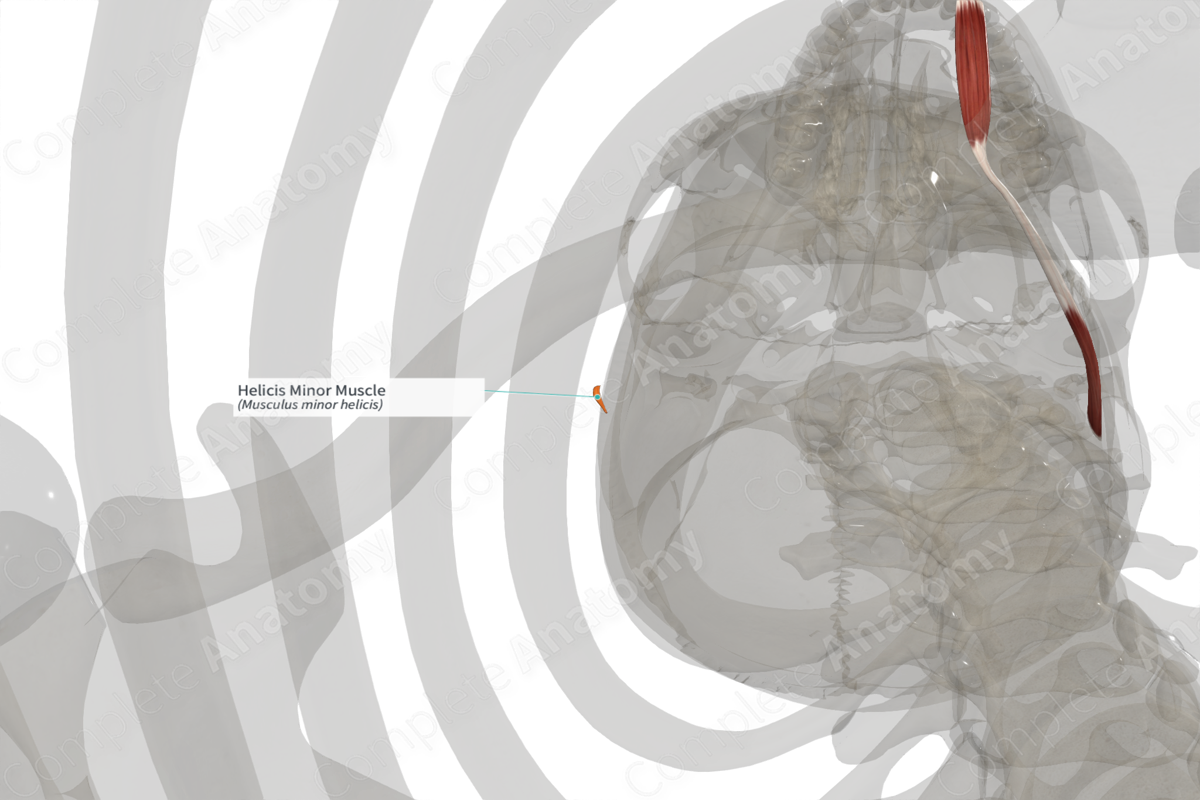
Quick Facts
Origin: Crus of helix.
Insertion: Crus of helix.
Action: Typically, no movement in humans.
Innervation: Temporal branches of facial nerve (CN VII).
Arterial Supply: Posterior auricular and superficial temporal arteries.
Origin
The helicis minor muscle attaches to the crus of the helix on the lateral surface of the auricle.
Insertion
The helicis minor muscle is obliquely orientated and inserts into the apex of the crus of the helix on the lateral surface of the auricle.
Actions
It is believed that the helicis minor muscle contributes to the shape of the auricle to some degree.
Learn more about this topic from other Elsevier products
Outer Ear

The outer ear consists of the pinna (generally called the ear) and the external auditory canal, which terminates in the tympanic membrane or eardrum.




